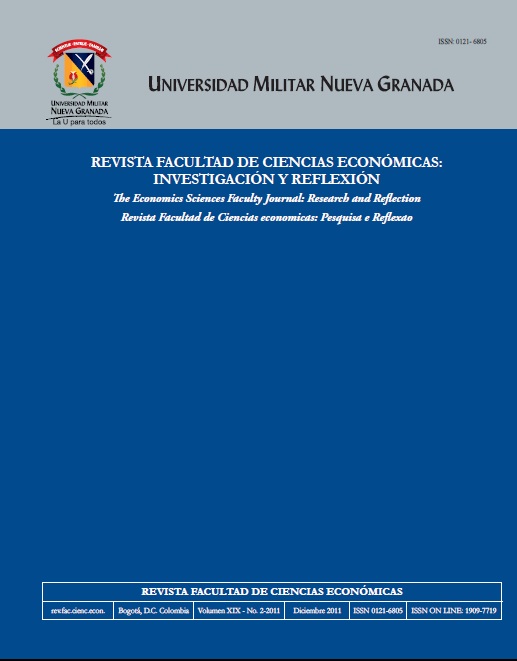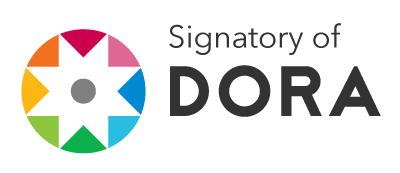Managing intangibles in software companies applying analytic hierarchy process and balanced scorecard
Abstract
The objective of this article is to present a methodology that uses two tools such as Analytic Hierarchy Process (AHP) and Balanced Scorecard (BSC), and also it allows managing intangibles in a company based on knowledge as software companies. A study case was made, which results allowed identifying intangibles necessary for this kind of companies. On the other hand, there was coherence among necessary intangibles and the specificity of each company according its purpose: design, maintenance and commercialization. This concludes that AHP and BSC integration origins a methodology that eases intangible management from hierarchy and performance monitoring and achievement expressed on strategic objectives and indicators in software companies.Downloads
References
Arthur Andersen & Co. (1992) The valuation of Intangible Assets, Special Report. London, The Economist Intelligence Unit.
Belkaoui, A. (1992). Accounting Theory. London Academic Press.
Ca-ibano et Al (1999). La Relevancia de los intangibles para la Valoración y la Gestión de Empresas: Revisión de la Literatura en: Revista Espa-ola de Financiación y Contabilidad, 100: 17-88.
Caniba-o, L. et. al. (2000). Accounting for Intangibles: A literature Review en: Journal of Accounting Literature: 102- 130.
Chiesa, V. et al. (2005). The valuation of technology in buy cooperate-sell decisions en: European Journal of Innovation Management: 5-30. http://dx.doi.org/10.1108/14601060510578556
Egginton, D. (1990). Towards some principles for intangible asset accounting en: Accounting and Business Research, 22, spring: 85-102.
González, P (2009). La integración del Balanced Scorecard (BSC) y el Analytic Hierarchy Process (AHP) para efectos de jerarquizar medidas de desempe-o y toma de decisión en una institución financiera. En: Revista Universo Contábil, 5, (2): 87-105. http://dx.doi.org/10.4270/ruc.2009215
Hendriksen, E. & Van Breda, M.F. (1992). Accounting Theory. 5th ed, Burr Ridge, Irwin.
Hendriksen, E. (1982). Accounting Theory. 4th ed, Burr Ridge, Irwin.
Kaplan, R. & Norton, D. (1997) Cuadro de Mando Integral (The Balanced ScoreCard).Harvard Business School Press. Barcelona, Gestión 2000.
King, K. (2003). The value of intellectual property, intangible assets an goodwill. EMI: 1-3. www.valuation-consulting.co.uk.
Lev, B. (2003). Remarks on the measurement, Valuation and Reporting of Intangible Assets en: Economic Policy Review:17-22.
Lev, B. (2004). Sacar más ventaja de los intangibles en: Harvard Business Review América Latina.
Marr, B., Gray, D. & Neely, A. (2003). Why do firms measure their intellectual capital? Journal of IntellectualCapital, 4 (4): 441-464. http://dx.doi.org/10.1108/14691930310504509
OECD (1992 a). Technology and the Economy. The Key Relatioships, Paris.
OECD (1992 b). OECD proposed guidelines for collecting and interpreting technological innovation data Oslo Manual Paris.
Ordo-ez, P. (2000). Importancia estratégica de la medición del capital intelectual en las organizaciones. Extraído el 28 de Febrero de 2009 disponible en: http://www.injef.com/revista/empresas/pop_991217.htm
Reilly, R. (1994). Valuation of intangible assets for bankruptcy and reorganization purpose en: Ohio CPA Journal:25-30.
Saaty, T. (2005). Theory and Applications of the Analytic Network Process. RWS Publications.
Symnetics Colombia. (2003). Balanced Scorecard Collaborative y Symnetics. Santiago de Chile.
Stickney, C. & Weil, R. (1994). Financial Accounting, Forth Worth, The Dryden Press.
Volsselman, W. (1998). Initial guidelintes for the collection and comparison of data on intangible investment. Netherlands Central Bureauf of Statistics & OECD.
White, G. Sondhi, A. & Fried, D. (1994). The analysis and uses of financial statements. New York, John Wiley and Sons.











